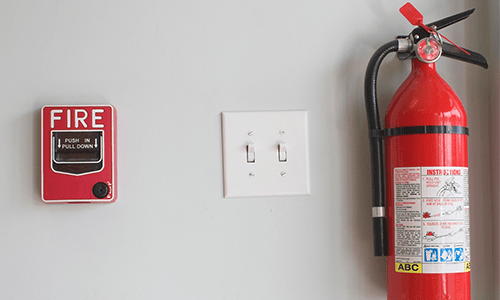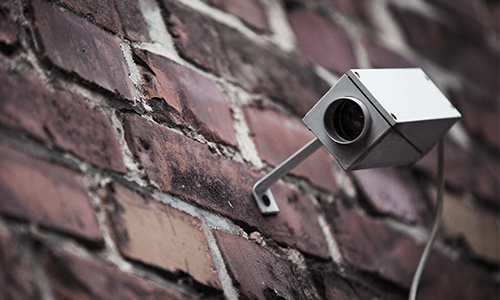As a practitioner for many years in the area of association law, I have been aware of a long-standing difference of opinion among association attorneys as to the obligation of a condominium association to pay for damages caused to the Common Elements (CE), Limited Common Elements (LCE), and to the Units and personal property of owners by the failure of the CE. An example would be water damage caused by the failure of the roof to keep rain water out. On the one hand, some association attorneys argue that an association’s only obligation with regard to such an event is to repair and replace the CE, up through the primer paint covering the walls of a unit. On the other hand, I (and various other attorneys) believe that if an association is responsible to maintain, repair and replace the CE (the usual formulation) which fails to do its job, the association is responsible for all of the damages that result from that failure. The whole question is complicated by variations in relevant declaration provisions and also by the duties of both an association and its unit owners to maintain casualty (property) and/or liability insurance. While it is possible that the interplay of liability law, declaration provisions and insurance may result in an association’s out-of-pocket liability being limited to the repair and replacement of CE up through the primer paint, I believe that such an outcome should not be assumed to be the customary outcome. Indeed, it will often not be the customary outcome.
What is very interesting to me is that there is no controlling caselaw in Illinois answering the question. Although CEs fail every day, causing damage to both real and personal property in condo associations, it appears to be one of those matters that does not get litigated (or at least not litigated at the appellate level).
As a further matter, I want to recognize that it is possible that CE could fail for reasons beyond an association’s control. The roof could be struck by lightning; an exceptionally heavy snow or rain could fall. Such “occurrences” (an insurance term, which will be relevant later on in this article) from nature are not what I am trying to address. However, an association could have a routine and apparently proper repair/replacement policy on which it follows though in a timely manner, with the result that it could argue that it has not breached its duty to keep the roof (or the particular CE at issue) in good repair. Still, I have found that such an argument usually has holes in it: Repairs may have been timely done, but the contractor hired to do the job may not have done it properly; the repair/replacement policy misunderstood the useful life of the CE with the result that it was in fact “older” than the Board realized; some prior event damaged the CE in a way that could have been noticed but wasn’t. I am not arguing that an association has “strict liability” for a failure of a CE. But it has been my experience that an extremely high percentage of CE failures are avoidable with proper attention from the Board. It is those CE failures, which raise the issue of breach of duty, to which I address myself.
In order to examine the problem at hand, I want to go back to basics:
In a condominium property, everything is either Unit or CE. See Section 2(e) of the Illinois Condominium Property Act, 765 ILCS 605/1 et seq., the “Act”. If and to the extent that a property has LCE, the LCE are simply “a portion of the common elements as designated in the declaration as being reserved for the use of a certain unit or units to the exclusion of the units…” Act, Section 2(s).
The boundaries of units at an association are defined on the plats of survey required to be attached as an exhibit to the declaration. Act, Sections 5 and 6. An example of a common formulation of the definition of the boundaries of a unit is: “The horizontal and vertical planes forming the boundaries of a unit coincide with the top of the finished floor, bottom of finished ceiling and interior face of perimeter finished walls.” Thus a unit is a cube of air ending at the finished walls, floor and ceiling. In the absence of any other provision in the declaration, the finishes on the walls, ceiling and floor (paint, wallpaper, molding, paneling, etc.) are also considered part of the unit. Act, Section 4.1(a)(2).
Important: The Act does not control many aspects of the issues discussed below. Since there is no one standard form of condominium declaration in Illinois, the following analysis cannot be deemed to be always correct for every condominium association. What follows are what I consider to be general rules in this area. It is always possible that a given declaration may have language that mandates a different result. Review of any given situation by the association’s attorney is always proper.
Maintenance, Repair and Replacement (“MRR”)
The Act makes the association, by its board, responsible for the maintenance of the CE. Act, Section 18.4 preamble and (a). Every declaration I can remember seeing (and I have seen hundreds) makes the association responsible for the MRR of the CE.
Somewhat oddly, the Act says nothing at all about who is responsible for the MRR of the units (although as will be seen later, the association is obligated to insure the entire building, at least up to the bare walls, bare floors and bare ceiling of the unit-i.e. through the primer paint, but not the finishes). Since the units are separate real estate, title to which is owned by the unit owner, logically the MRR of the unit should fall to the unit owner. Virtually all declarations I have seen make a unit owner responsible for the MRR of the owner’s own unit.
Responsibility for the MRR of LCE is variable. If a declaration says nothing specifically about the LCE, then the MRR of the LCE are treated the same way as the CE (remember that LCE are just a subcategory of CE). But often, especially in more modern declarations, there is a separate provision that makes the relevant unit owner(s) directly responsible to maintain some part or all of their appurtenant LCE. Or a declaration may give the association the right or even obligation for the MRR of the LCE, but then allow the association to charge the cost back to the appurtenant unit owners. This is authorized under Act, Section 9(e).
So the result is that in order to analyze the obligation for the MRR of a part of a condominium, first you must determine what part of the building is at issue: CE, Unit or LCE. Even then, you must review the declaration to see who has the obligation for the MRR of that particular part of the building.
Common Elements Failures
To make this discussion slightly easier, I want to use the example of the roof as a CE. The roof of a condominium building is almost always expressly deemed a CE. And, if there is a rainstorm and the roof leaks, it is easy to see understand the consequences of such a leak.
If a roof leaks, virtually every type of property at a building can be affected. The roof itself, the hallway walls, walls interior to units, the finishes on the walls, floor and ceiling of a unit, even an owner’s personal property inside a unit, like furniture, rugs and clothing, can all be damaged by water from a leaking roof.
A Pure Liability Analysis
In what follows I am assuming that no person caused the roof to leak. That is, noone went up on the roof and poked holes in it or took any other actions to cause the leak. If someone does damage CE, whether intentionally or through negligence, virtually all declarations make the person doing so liable for all injury and damages caused by his/her actions. See, e.g. Gelinas v. Barry Quadrangle Condo. Assn., 2017 IL App (1st) 160826, para. 18.
Rather, the situation I am positing is that the roof is, for whatever reason, not properly maintained, and that as a result the roof begins to leak.
By contrast, if the cause of the water leak is from a unit (overflowing tub or other water leak internal to the unit), the Act, at Section 9.1(a), makes the unit owner responsible for all injury and damages cause by the leak. “A unit owner shall be liable for any claims, damages, or judgment entered as a result of the use or operation of his unit, or caused by his own conduct.”
No similar statement exists in the Act for association CEs.
As a general proposition, the party who has the duty to maintain, repair or replace a part of building is responsible for injury and damages caused by the failure of the relevant part of the building. Kallman v. Radioshack Corp., 315 F.3d 731, 737-39 (7th Cir. 2002), rehearing denied. As mentioned above, the Act clearly makes the association, by its board, responsible for the MRR of the CE. Act, Section 18.4(a); See also Spanish Court Two Condominium Association v Carlson, 2014 IL 115342, at para. 21.
Generally speaking, at Illinois common law, the elements of a claim for premises liability are existence of a duty owed by the defendant to the plaintiff, breach of the duty, and injury (or damage) caused as a result. Keating vs. 68th and Paxton LLC, 401 Ill.App.3d 456 (1st Dist. 2010), appeal denied 237 Ill.2d 559.
The duty of the association for the MRR of the roof is thus both statutory (Act, Section 18.4) and per the declaration (a form of contract). The failure of the roof to prevent the leak is a breach of the duty. The injury is the actual damage caused as a result of the leak.
The next question is the measurement of the damages. In Illinois, it depends if the property damaged is beyond repair or not. If beyond repair, then the damages are the fair market value of the property immediately before the destruction, less any salvage value the property may have. If the property can be repaired, then the damages are the cost of repairs necessary to restore the property to its physical condition before the damage. Macy’s Inc. v Johnson Controls World Services, Inc., 670 F.Supp.2d 790, 800-01 (N. D. Ill., 2009). To the extent that personal property is damaged, the damages are the fair market value of the property immediately before the loss. But not the replacement cost. See Benford v. Everett Commons, LLC, 2014 IL App (1st) 130314, paras. 30-32.
So, under a pure liability analysis, the various outcomes are these:
- If the roof leaks and other CE (e.g. walls of the hallway) are damaged as a result: The hallway walls are CE. The association is responsible both for the MRR of the hallway walls and the roof which leaked. Clearly the association is responsible for the damages to its “own” property caused by the failure of the roof to do its job.
- If the roof leaks and the perimeter walls (and/or ceiling and/or floor) of a unit (but not the finishes) are damaged as a result: The association is responsible for the MRR of the walls, floors and ceiling which are CE (that is, the walls and ceiling up through the primer coat and the floor often to the finish flooring). Again, because those walls are CE and the roof which leaked is CE, it is the association that has to bear the damages caused by the roof’s failure.
- If the roof leaks and the finishes on the interior of the perimeter walls (and/or ceiling and floor) of a unit are damaged as a result: The finishes are usually part of the unit (Act, Section 4.1(a)(2)-although the declaration may alter that conclusion), and the unit owner is usually stated in a declaration as being responsible for the MRR of the finishes on the walls of his/her unit. But the issue is not who has the obligation for the MRR of them. The issue is who has damaged them (that is, a liability, not a maintenance analysis). After all, the unit owner is blameless in causing the damages. Thus, the roof CE having caused the damages to the finishes, the association will either be obligated for the MMR of the finishes, or the association will have to pay damages to the unit owner for the damaged finishes, measured as stated above.
- If the roof leaks and a LCE of a unit below are damaged (such as, for this purpose-a perimeter door): The LCE may be the responsibility of the association for the MRR of that item. Or the LCE could be the responsibility of the owner for the MRR of that item (depending on the declaration). But the issue is not who has the obligation for the MRR of the item. The issue is who has damaged it (that is, a liability, not a maintenance analysis). After all, the unit owner is blameless in causing the damages. Thus, the roof CE having caused the damages to the door, the association will either be obligated for the MMR of the door (if the association has the responsibility for the MRR of the door in the first place). Or the association will have to pay damages to the unit owner for the damaged door, measured as stated above.
- If the roof leaks and personal property (furniture, clothing, rugs) of a unit owner is damaged as a result: The unit owner’s personal property is never the obligation of the association for MRR. Here again the unit owner is blameless in causing the damages to his/her personal property. To the extent of the damage to the personal property (as measured as above) the association will be responsible to the unit owner.
Insurance at an Association
The association is obligated by statute to carry both property (casualty) insurance and liability insurance. Act, Section 12(a). The property insurance is required to be in the full insurable replacement cost of the property (including CE, LCE and units, up through the primer coat on the walls, subject to certain board decisions). Act, Section 12(a)(1). If a unit owner makes certain improvements to his/her unit, the increased value of the building doesn’t have to be covered by the property insurance. But if such improvements are covered, the association may bill the increased premium costs for those improvements back to the relevant unit owner. Act, Section 12(b).
The amount of any deductible under the association’s policies is a board decision, not governed by the Act.
From the unit owner’s side, insurance is more hit or miss. Most more modern declarations require an owner to carry property insurance on the unit owner’s property anywhere on the property (whether inside the unit or, for example, in a storage area). In addition, a unit owner is often required by the declaration to carry liability insurance-that is, insurance against the unit owner or the unit causing injury to a 3rd person or damage to a 3rd person’s property. The Act, at Section 12(h), allows (but does not require) an association’s declaration (or bylaws) or rules to mandate that each unit owner have liability insurance. There is no comparable statute re unit owner property insurance.
Finally, many declaration have a provision that states some variation of the following: “Each Unit Owner hereby waives and releases any and all claims which he or she may have against any other Unit Owner, the Association, its officers, members of the Board, the Declarant (developer) the managing agent of the Association and their respective employees and agents, for damages to the Common Elements, the Units or to any personal property located in the Unit or Common Elements, caused by fire or other casualty, theft, vandalism and each and all other causes to the extent that such damage is covered by fire or other form of casualty insurance.”
Note that I have seen the last few words have a number of variations, such as: “to the extent such damage is actually covered by fire…insurance”; “to the extent the unit owner has received payment, in whole or in part, from said unit owner’s fire insurance”; “to the extent that such damage is covered by fire or other form of casualty insurance or would be covered by insurance for which the unit owner is responsible to obtain under this declaration”; and other variations.
Each of these formulations can result in a different outcome. If the unit owner has insurance, makes a claim and is paid in full (less a deductible) that is the easy situation. But maybe the unit owner doesn’t want to make a claim for some reason. Or maybe the unit owner doesn’t have the insurance he/she was obligated to obtain. The exact language of the waiver/release section is important.
Note that under Act, Section 12(c), the board can determine who is responsible for damages and cause that party to have to pay the deductible of an innocent unit owner who makes a claim on his/her insurance and who gets paid (less the deductible). In that way, innocent unit owners (or, if the damages to CE are caused by action of a unit owner, then the association itself,) can be truly made whole. See Gelinas, at paras. 20-22.
Effect of Insurance on the Liability Analysis
Let’s return to the 5 situations posited above:
- If the roof leaks and the walls of the hallway (for example) are damaged as a result: The association’s property insurance is at issue here, as the property damaged is CE. The association’s liability insurance is not at issue, as the damaged party is not a 3rd person, but is the association itself.
A roof leak, not caused by an “occurrence”, may not be covered by the property insurance. If that is the case, the association will have to pay for the MRR of the hallways to the extent the association chooses to do so (after all, the hallways being CE, the association has control of how the hallways look). - If the roof leaks and the perimeter walls (and/or ceiling and/or floor) of a unit are damaged as a result: Here again, the property damaged is CE (up through the primer coat), so the association’s property insurance is at issue. The association may (or may not) get insurance proceeds due to the lack of an “occurrence”, but because the damaged walls are CE, the association (not the unit owner) will have to pay to restore the interior walls and ceiling, at least through the primer, and the floor, up to (depending on the definition of CE at the association) the finished flooring.
- If the roof leaks and the finishes on the interior of the perimeter walls (and/or ceiling and floor) are damaged as a result: My analysis is that since the finishes are often deemed part of the unit (and not CE or LCE), and are on the unit side of the primer paint, the association’s property insurance will not cover the damage. Then the association liability insurance will take over, as the damaged property is being treated as a 3rd party’s (the unit owner’s) property. The outcome is that the association (and likely its liability insurer) will be liable for the damages under the liability analysis. The only other issue is whether the unit owner’s insurance covers the damage and whether the waiver/release language of the declaration (referenced above) is applicable to mandate such waiver or release. It could happen that the waiver/release language applies but the unit owner, for reasons of his/her own, does not wish to, or will not, make a claim on his/her property insurance. In that case, the association doesn’t have to pay for the damages, but the unit owner’s insurance hasn’t reimbursed the unit owner. The finishes could remain unrepaired, as the association can claim that, despite its liability, until the unit owner’s own insurance has paid or denied coverage, the association will not know if the unit owner’s insurance coverage will result in waiving or releasing the association’s liability. Such a situation (finishes remaining unrepaired) is rarely acceptable. So the alternative is for the association (or its liability carrier) to repair the finishes, and then assess the unit owner for reimbursement depending on the outcome of the waiver/release issues. And as between the association’s property insurance and the unit owner’s insurance (if both arguably cover the same damaged property), the association’s insurance is primary. Act, Section 12(f). It has been argued that because the CE only run through the bare walls (primer coat) as a matter of MRR, the association’s liability to a unit owner is similarly limited. I do not agree with this. The issue of the extent of the association’s obligation for the MRR of the CE at a building is not the same, in my opinion, as the issue of liability for failure of the CE. In the liability context, the existence of the MRR obligation only goes to establishing who is liable if that part of the building fails to do its job, and is not a limitation on that liability. I note that it is also possible a declaration may affirmatively make the “interior surface” of the perimeter walls, ceilings and floor LCE of that unit, and not part of the unit itself. Such a provision overrules the default provision of Act, Section 4.1(a)(2). Thus, the finished interior surface, as LCE, could be deemed covered by the association’s property insurance. The exact coverage of the association’s property insurance would have to be reviewed to determine the insurance outcome here. If the association’s property insurance does not provide coverage, the association’s liability insurance still could do so.
- If the roof leaks and a LCE of a unit below is damaged (such as, for this purpose- a perimeter door): My analysis here is the same as per the last paragraph of no. 3 above.But, if the doors are treated in the declaration as part of the unit, then the association liability insurance would take over, as the damaged property is being treated as a 3rd party’s property. See also para. 3 immediately above.
- If the roof leaks and personal property (furniture, clothing, rugs) of a unit owner/occupant is damaged as a result: The association’s property insurance never covers the unit owner’s personal property. But the association’s liability insurance may be triggered. At the same time, the unit owner’s property insurance (if required of the unit owner, or if the unit owner has the same) should cover the damages. Thus, again, the association remains liable to the unit owner. The only issues are whether the association’s liability insurance covers the damage, and the extent, if any, that the unit owner’s own property insurance covers the damages (and/or the effect of the waiver/release language on the liability of the association).
Overall, issues of liability for the failure of the CE as a result of failure to properly maintain, repair and replace them are a complex combination of common law, statutory, documentary and insurance analysis. Basic liability law mandates that the association will, in almost all cases, be liable for all such damages. The Act, and the given association’s documents and insurance may result in that liability being covered by insurance and/or waived/released. But there is no basis, in my opinion, for automatically concluding that, in the ordinary course, the association’s liability for damages to the unit, LCE or the personal property of the unit owner or other occupant, is limited solely to putting the CE, up through the primer paint, back into good repair.






 Laura Lau Marinelli
Laura Lau Marinelli 

